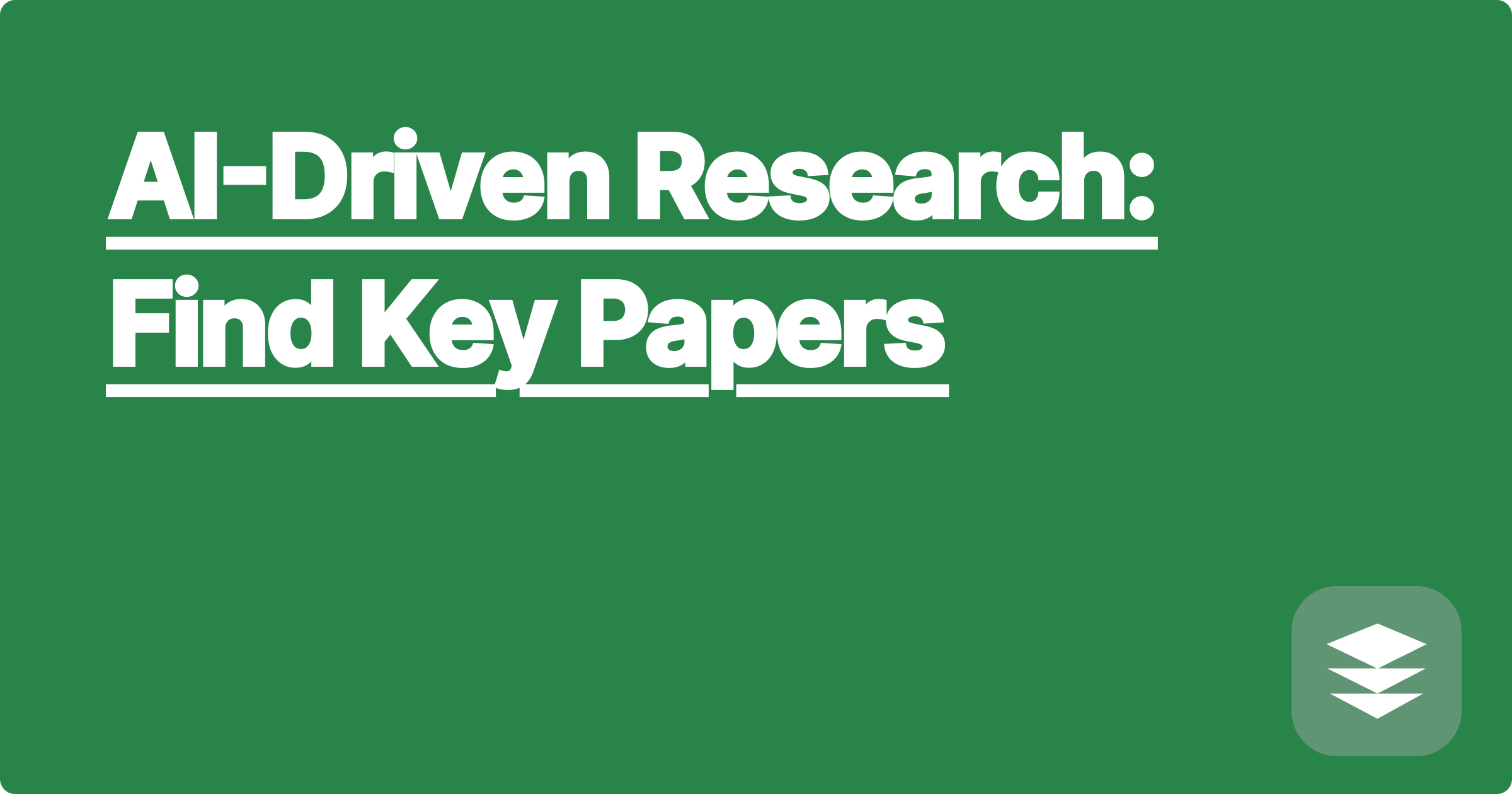
The sheer volume of research published daily in STEM fields can feel overwhelming, a relentless tide of information that makes it difficult for even seasoned researchers to stay afloat. For students navigating complex coursework and ambitious research projects, this information overload can be paralyzing. Finding the most relevant and impactful papers for your work often feels like searching for a needle in a haystack. Fortunately, the rise of artificial intelligence offers powerful new tools to navigate this complex landscape and unlock a world of academic and research possibilities. AI-driven solutions can streamline the research process, helping you identify key papers, synthesize information, and ultimately accelerate your progress.
This matters deeply for STEM students and researchers because time is your most precious resource. Efficiently finding the right research papers can be the difference between a successful project and one that struggles to gain traction. Beyond efficiency, AI can also broaden your horizons by surfacing relevant research you might otherwise miss, leading to new insights and innovative approaches. Mastering these AI-powered tools will not only improve your immediate academic performance but also equip you with invaluable skills for a future career in a rapidly evolving scientific landscape.
The traditional approach to literature review involves keyword searches in databases like PubMed, Scopus, or Web of Science. While these databases are invaluable, they often return thousands of results, many of which are only tangentially related to your specific research question. Manually sifting through these results is incredibly time-consuming and can lead to critical papers being overlooked. Moreover, the constantly evolving terminology within STEM fields makes it challenging to craft search queries that capture all relevant research. Finally, even when you find potentially useful papers, extracting the key information and synthesizing it into a coherent understanding can be a laborious process. This challenge is particularly acute for students who are simultaneously grappling with demanding coursework and learning the ropes of academic research.
AI-driven research assistants like GPAI, Semantic Scholar, and Elicit offer a radically different approach to literature review. These platforms leverage natural language processing and machine learning to understand the context of your research question and identify the most relevant papers. Instead of relying solely on keyword matching, they analyze the full text of articles, considering factors like citation networks, author expertise, and publication venue. This more nuanced approach allows these tools to surface highly relevant papers that might be missed by traditional search methods. Furthermore, these AI assistants can summarize key findings, extract important data points, and even identify conflicting information within the literature. This empowers researchers to quickly grasp the essence of a paper without having to read it in its entirety, significantly accelerating the literature review process.
Imagine you are researching the application of machine learning in drug discovery. Instead of simply searching for "machine learning" and "drug discovery," you can pose a more nuanced query to GPAI, such as "How can reinforcement learning be used to optimize the design of novel antibiotics?" GPAI will then analyze its vast database of scientific literature, considering not just keywords but also the semantic meaning of your query. It will then present you with a ranked list of relevant papers, along with concise summaries of their key findings. You can further refine your search by specifying criteria like publication date, journal impact factor, or specific authors. GPAI also allows you to create personalized collections of papers and generate literature review outlines, streamlining the writing process. Integrating GPAI with a time management tool like Clockwise or Todoist can further optimize your workflow, ensuring you dedicate sufficient time to each stage of your research.
A physics student investigating quantum computing algorithms could use Wolfram Alpha to verify complex equations and explore different quantum models. A chemistry student studying protein folding could leverage AlphaFold to predict protein structures and analyze their stability. A biology student researching gene expression could use GPAI to identify relevant papers on CRISPR technology and analyze their experimental methodologies. These are just a few examples of how AI can be integrated into different STEM disciplines to enhance learning and research. By automating tedious tasks and providing access to powerful analytical tools, AI empowers students to focus on the higher-level cognitive aspects of their work, fostering deeper understanding and accelerating scientific discovery.
Embrace the power of personalized learning by leveraging GPAI’s custom study plan feature. Input your course syllabus and GPAI will generate a tailored study schedule, breaking down complex topics into manageable chunks. Combine this with the Pomodoro technique, using a timer to work in focused bursts, and you'll find your study sessions become significantly more productive. Don't underestimate the importance of mental well-being. Apps like Headspace or Calm can be integrated with your AI-powered study schedule to ensure you incorporate mindfulness and stress-reducing activities into your routine. Finally, remember that AI is a tool, not a replacement for critical thinking. Always evaluate the information provided by AI tools and use your own judgment to synthesize information and draw conclusions.
To maximize your academic and research success, begin by exploring the various AI tools available and identifying those that best align with your specific needs and learning style. Experiment with different features and functionalities to discover how they can best support your workflow. Don't hesitate to seek guidance from professors, mentors, or fellow students who have experience using these tools. By actively engaging with these technologies and incorporating them into your daily routine, you can unlock their full potential and transform your approach to learning and research. The future of STEM learning is here, and it's powered by AI.
AI-Driven Research: Find Key Papers
Bio Homework Help: AI Assistance
Smart Engineering: AI Tools Guide
Coding Made Easy: AI Debugging
Study Smarter: AI Time Management
AI for Data Science: Analysis Tools
Statistics Made Simple: AI Help